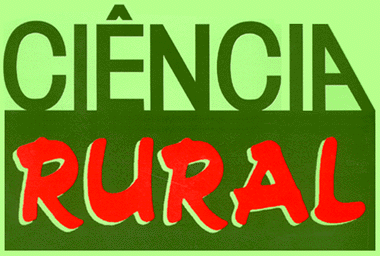Resumo em Português:
Foram selecionados 22 bovinos, da raça Ibagé, com idade média de 2 anos. Os animais foram divididos em dois grupos de 11 bovinos cada. O grupo testemunha não foi tratado e o grupo experimental foi tratado com produto mosquicida. Após contagem de moscas, a cada 14 dias, num período de 16 meses, quando também era realizada a pesagem dos animais, estes foram abatidos e os respectivos couros remetidos ao curtume onde foram curtidos e avaliados em dois estágios: o Wet-Blue e o curtimento total. Foram realizados estudos sobre peso dos animais, peso de carcaça e rendimento de carcaça nos dois grupos ficando demonstrado que não houve correlação entre a presença do parasita e a variação destes parâmetros. No abate, foram colhidas amostras de pele do flanco e da garupa, dos animais do grupo não tratado, e processadas para histopatologia, o que revelou a presença de infiltrado inflamatório com eosinófilos e poucas células mononucleares (linfócitos e plasmócitos) ao redor dos vasos da derme superficial que em 84,21% das amostras foi discreto, em 10,52% foi moderado e em 5,26% foi acentuado. Na fase de curtimento, denominada de Wet-Blue, os couros dos animais do grupo não tratado foram classificados como: 18,18% tipo "A",28,28% tipo "B", e 54,54% tipo "C", já os couros dos animais pertencentes ao grupo tratado obtiveram a seguinte classificação: 45,45% tipo "A", 36,36% tipo "B" e 18,18% tipo "C". Nesta fase, observou-se que, no grupo de animais tratados, as áreas comumente parasitadas pela mosca dos chifres (flancos e garupa) apresentavam poucas ou nenhuma lesão enquanto no grupo de animais não tratados essas áreas estavam cobertas por lesões. Após o curtimento total a classificação dos couros dos animais do grupo não tratado passou a ser de 54,54% dos couros tipo "A"36,36% tipo "B" e 9,09% tipo "C"; já os couros dos animais do grupo tratado passaram a receber a seguinte classificação:81,81% tipo "A", 9,09% tipo "B", e 9,09% tipo "C". Após a aplicação de pastas especiais por profissionais especializados evidenciou-se que as áreas afetadas pela mosca dos chifres onde se observara um grande numero de lesões passaram a ter um aspecto homogêneo e sem marcas. Deve-se salientar que estes couros, mesmo provenientes de animais tratados apresentavam lesões características de outros parasitas como Dermatobia hominis e Boophilus microplus e também lesões provavelmente adquiridas durante o processamento no frigorífico. Estes resultados sugerem que a mosca dos chifres não representa um fator econômico importante para a industria do couro.
Resumo em Inglês:
Twenty two male 2- year- old Ibagé bovines at the beginning of the experiment were selected. They were divided into two groups of 11 bovines each. One group was treated with insecticide at 14 days intervals and the other remained as control. After that the animals were slaughtered and the respective leather sent to the tannery where they were tanned and evaluated in two stages, the Wet-Blue (leather treated in chromium, still humid and bluish) and the total tanning. Animals weight, carcasses weight and dressing percentage were recorded and there was no correlation between infestation by the horn fly and those parameters. At slaughter, samples of the flank areas and the back of the animals were collected and processed for histology studies, which revealed the presence of a perivascular inflammatory infiltration with eosinophils and few mononuclear cells (lymphocytes and plasma cells) at the superficial dermis in which 16 out of 19 samples (84.21%) were mild in 2 out of 19 samples (10.52%) were moderate and in 1 out of 19 samples (5. 26%) was marked. In the tanning phase called as Wet-blue, the classification of the leathers was as follows: 8 out 22 (36.36%) type "A", 10 out of 22 (45.45%) type "B", and"4 out of 22 (18.18%) type "C. At this point in the group of animals treated with insecticide the areas commonly parasited by the horn fly (flanks and back) a few lesions or no lesions were depicted whereas in the group of non-treated animals those areas were almost totally covered by lesions. After the total tanning the classification was 40.90% of type "A" leather, 50% type "B" and 9.09% type "C". This change was chiefly due to a process called make up, used to remove all marks. It must be emphasized that the leathers had lesions from other parasites such as Dermatobia hominis and Boophilus microplus and lesions acquired in the slaughter house as well. The results suggest that the horn fly does not present a real economic loss to the leather industry.
